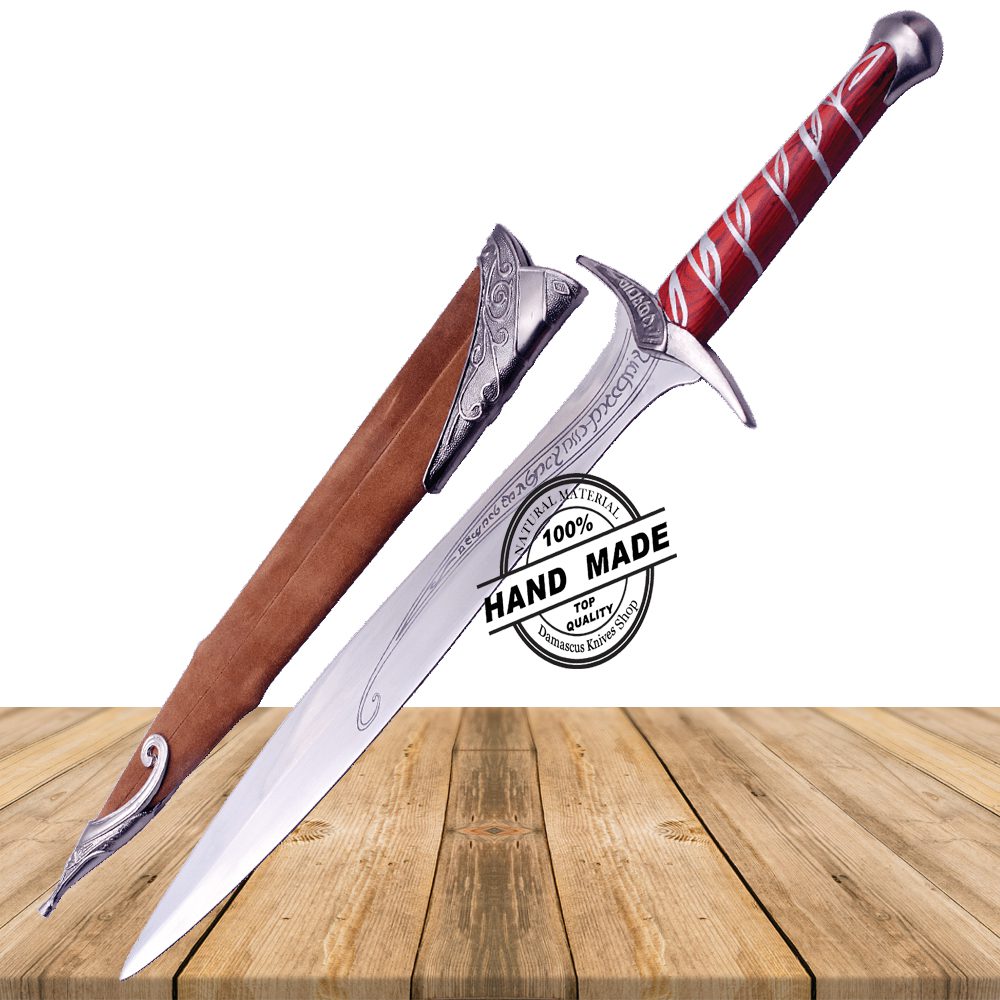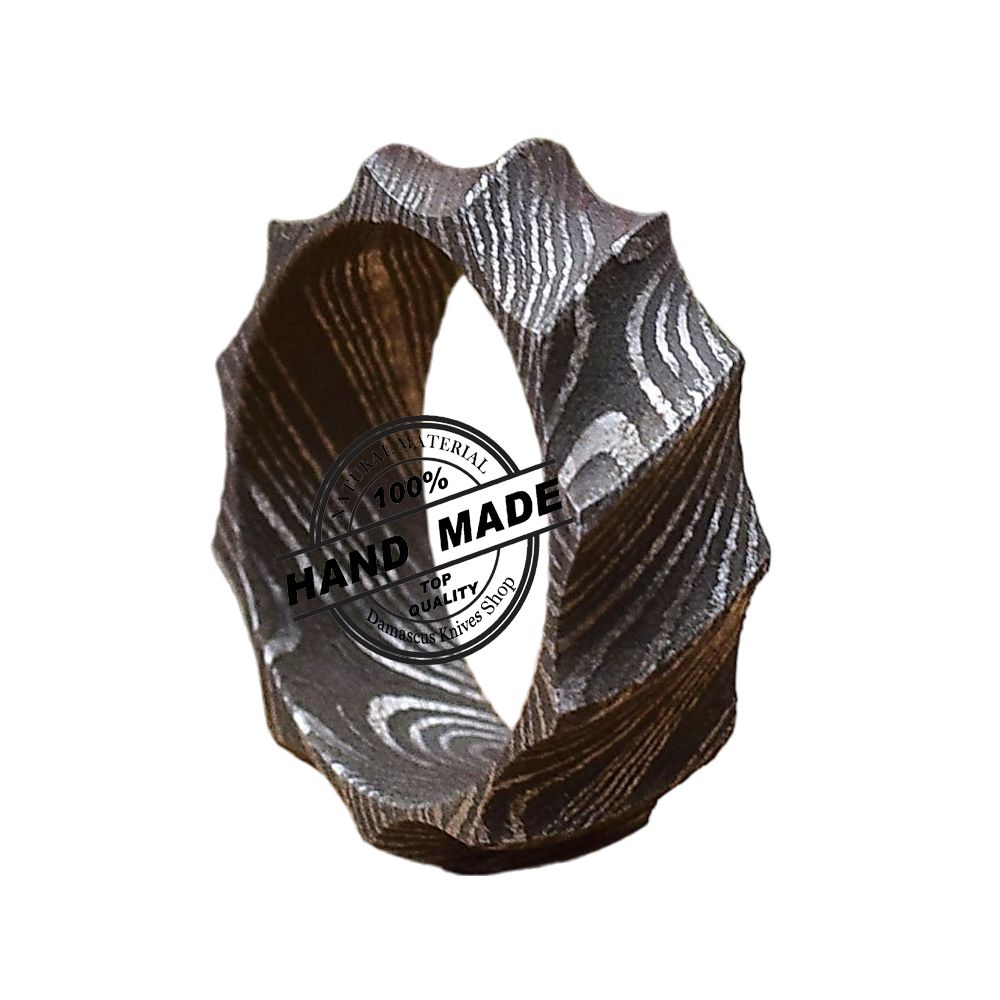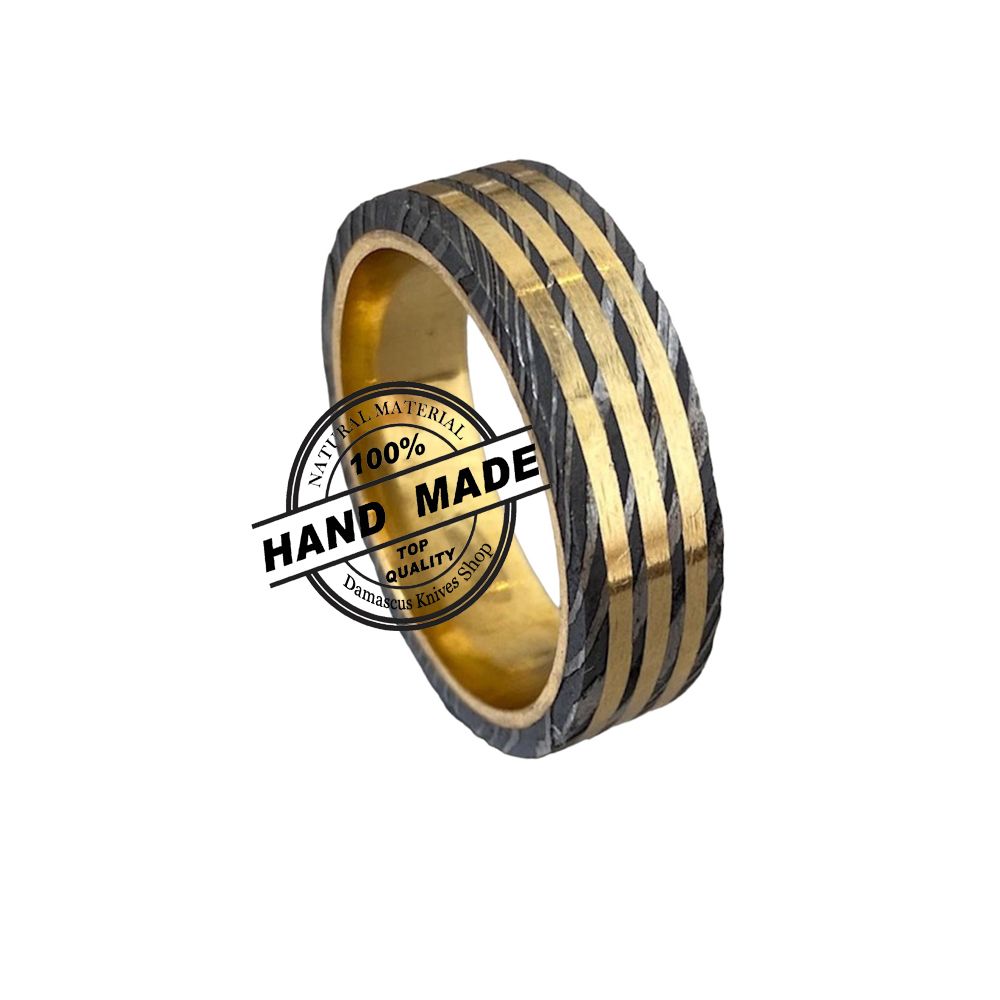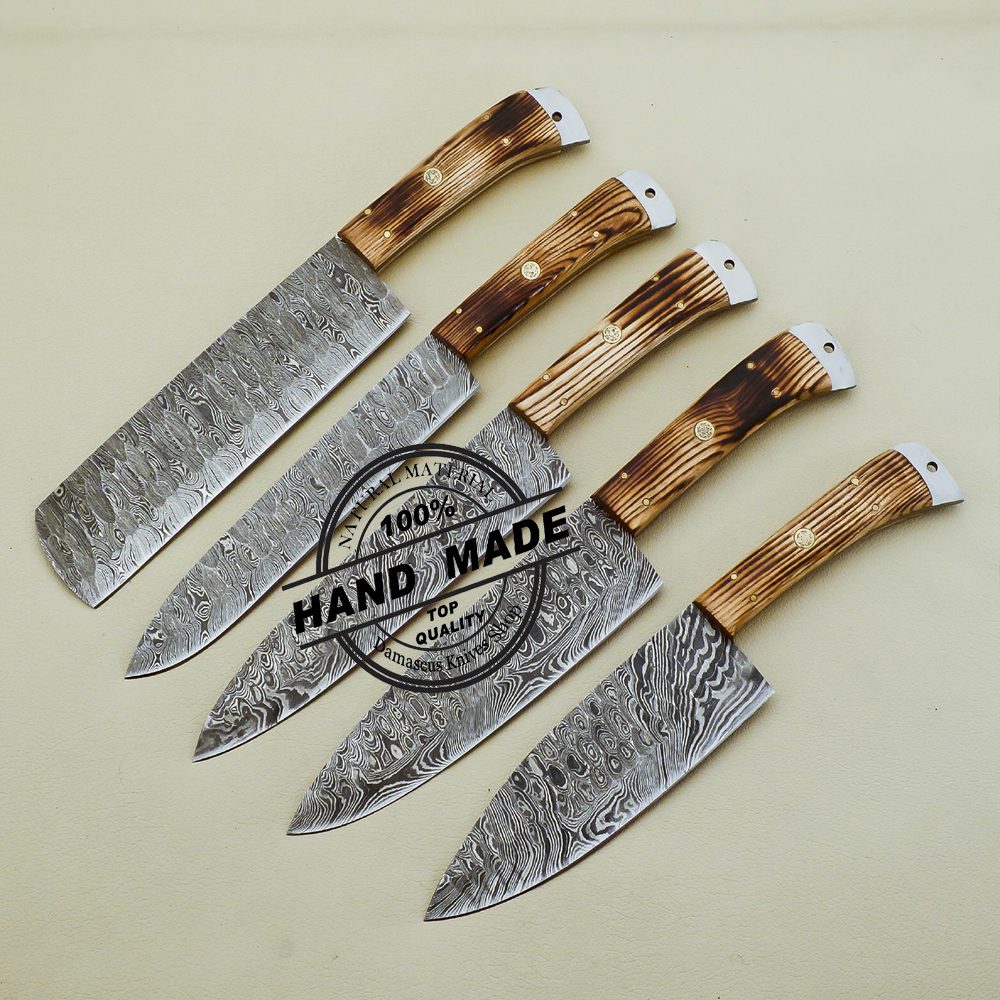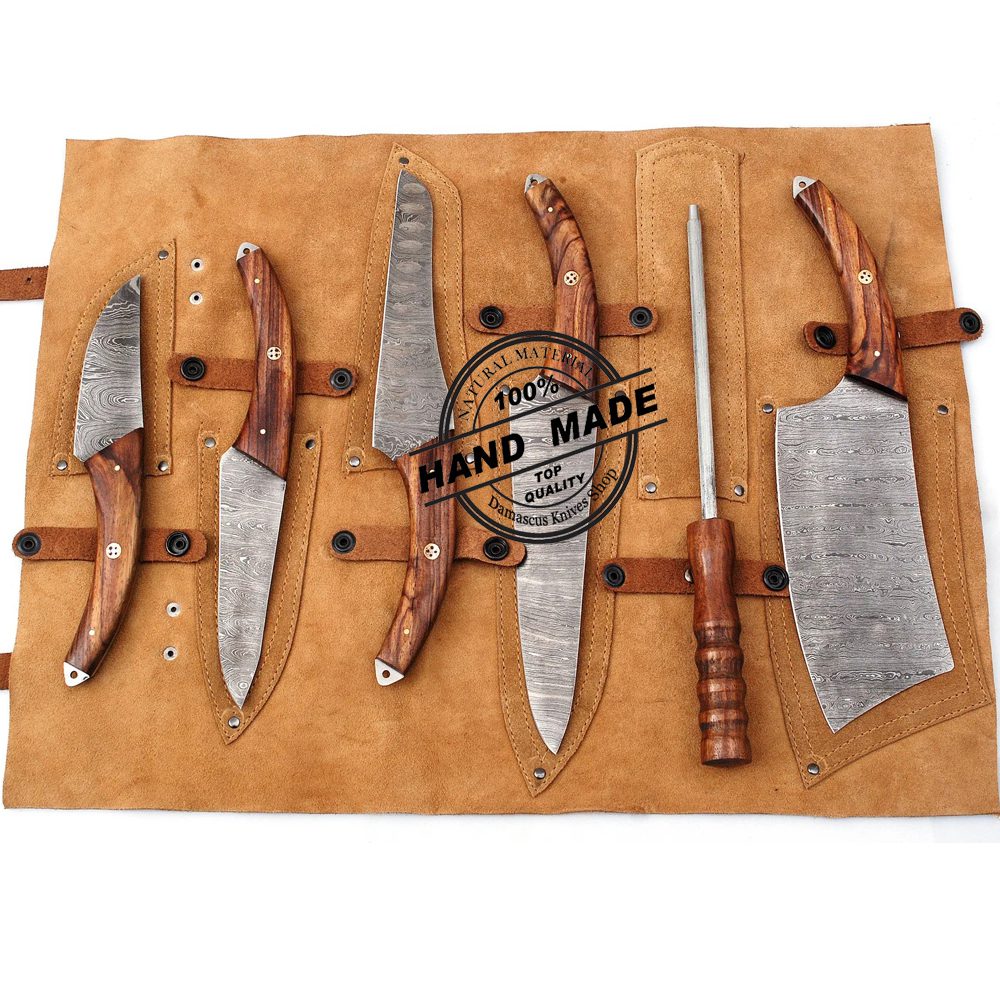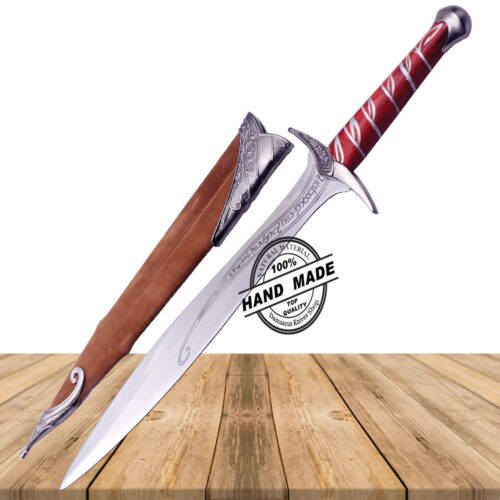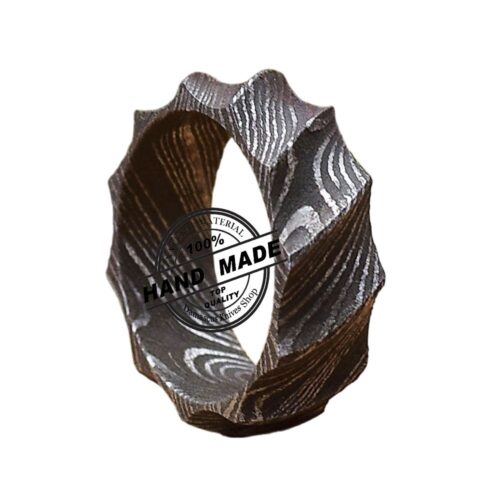Applying oil to your knife after every use is not mandatory, but it is strongly advised to adopt this routine. By doing so, you will significantly improve the longevity of the steel and prevent any staining on the knife. We provide an ample supply of high-quality oil that will last you for a considerable amount of time. Our unique oil blend comprises mineral oil, Camellia oil, and Vitamin E, all of which are of exceptional quality, food-safe, and specially designed to protect both your knife and its handle.
If rust spots appear on your knife, try eliminating them by utilizing a worn-out scrub pad and mild soap. Carefully rub the affected area following the direction of the Damascus steel grain. If this technique does not yield satisfactory results, you can consider using a powdered scrubbing compound and repeating the gentle rubbing motion along the knife’s grain. Should this method also prove unsuccessful, you can attempt the previous step once again, but this time using a fresh scrubbing pad and powdered detergent.
To maintain the longevity of the wooden handles on your knife and prevent them from drying out and developing cracks, it is recommended to use a linseed oil like Tried and True Danish Oil. This specific Danish Oil can deeply penetrate the wood and create a strong protective barrier. Simply apply a small amount of the oil onto a lint-free paper towel or cloth. Allow the oil to soak into the wood for approximately 10-15 minutes, then wipe off any excess oil. It is important to ensure that the handle is completely dry before storing it. Additionally, when you regularly oil your knife, we highly suggest using the same oil on the handle to prevent it from drying out.
Putting these knives in the dishwasher is not recommended. Unloading the dishwasher poses a high risk of injury. Moreover, modern dishwashers use strong detergents and high temperatures, which can strip away the beneficial oils from the knife and handle, and may even cause damage to the natural or synthetic handles. Since most of our knives are made of high-carbon steel, they are prone to rusting if water is left on them. By placing your knives in the dishwasher, you are inviting rust and other potential issues. We strongly advise hand washing, drying, and storing them properly. It is also crucial to avoid using abrasive pads, as they can remove the etched oxidation and potentially scratch your knife.
Proper care and attention are essential when it comes to maintaining a meticulously crafted Damascus steel knife. To ensure its longevity as a masterpiece, special care is required. Damascus steel possesses a unique beauty and luster that must be preserved.
Most hand-forged Damascus blades are crafted from high-carbon steel with a small amount of chromium in the alloy. Although high in carbon, these blades are susceptible to rust if not properly cared for. Collectors should make it a priority to keep their blades clean and dry to prevent any rust or staining.
Once you have cleaned and dried your Damascus steel knife, it is crucial to apply a specialty wax to the blade. This wax acts as a protective barrier against moisture, safeguarding the integrity of the steel. By preventing rust, the distinctive pattern of the Damascus steel will remain as vibrant and captivating as the day it was forged by hand.
It is important to avoid exposing the blade to abrasive elements such as textiles and chemicals. Using a rough cloth or metal cleaner can potentially remove the etched oxidation that reveals the blade’s intricate pattern. If the etching is altered or damaged, it is advisable to send the blade back to the original designer for professional repair.
Proper storage conditions play a vital role in preserving the longevity of the blade. When the Damascus steel knife is not in use, it should be stored in a dry interior environment that is free from fluctuations in moisture levels and temperature. A suitable option for storage could be a box or a soft case.
A carbon steel Damascus knife is prone to damage when used on acidic foods (such as fruits), in moist, humid surroundings, or for field dressing games. The oxidation can erase the blade’s etching.
Therefore, remember to rinse and dry your knife immediately after using it, being careful not to rub the blade too harshly. The softer material will not drain the blade if you dry it with a microfiber or cotton cloth.
By following these guidelines, you can ensure that your Damascus steel knife remains in impeccable condition, allowing you to appreciate its beauty and craftsmanship for years to come.
Proper care is essential for maintaining the longevity of your Damascus steel knife. While these knives are renowned for their long-lasting sharpness, occasional sharpening may still be required to ensure optimal effectiveness.
There are no specific techniques or methods required for sharpening hand-crafted Damascus blades. Using a whetstone is highly recommended, as it is an excellent tool for honing not only Damascus blades but also other high-quality knives.
By taking the necessary steps to care for your Damascus steel knife, you can significantly extend its lifespan.
Different patterns of Damascus steel can be achieved through various techniques and materials. One method involves incorporating copper and stainless steel, resulting in a beautiful bronzed and sunburst pattern. Alternatively, alternating layers of stainless steel and nickel silver can be used to create an undulating pattern along the blade’s bevels. Additionally, certain materials can be dark-etched to create a striking contrast, or etched and re-polished for a more subtle pattern.
It is important to note that the process of creating Damascus steel patterns is highly intricate and requires skill and expertise. A master smith meticulously peels, sands, grinds, and re-forges the steel to achieve an exquisite core with a mesmerizing pattern. However, it is worth mentioning that due to the complexity of the process, a significant amount of steel, ranging from 40 to 90 percent, may end up as scrap on the floor. Nonetheless, the result is a stunning piece of craftsmanship that showcases the artistry and skill of the master smith.
The strength of Damascus steel is highly regarded due to its aesthetic appeal and durability. However, its resilience is contingent upon the quality of its materials and the forging techniques employed. Professional forging methods ensure that the blade is devoid of any cracks, voids, delamination, or other irregularities.
Although it may not be the strongest metal available in the blade market, high-quality Damascus steel possesses sufficient strength and durability to fulfill a wide range of purposes. Modern metal alloys have also made significant advancements in terms of strength, enabling them to withstand even the harshest conditions.
It is important to note that the strength of Damascus steel varies depending on the type. For example, Carbon Damascus is relatively soft during the working process but becomes stronger than stainless steel once it is hardened. On the other hand, Stainless Damascus offers unparalleled durability and charm.
The initial step in the creation of Damascus steel involves the careful selection of materials by these skilled craftsmen. Through a meticulous forging process, sheets of varying steel grades are heated, welded, and shaped into individual pieces, which are then repeatedly heated and welded together to form a billet.
These master smiths employ various tools, including an anvil, a forge with sufficient heat, and a power hammer, to meticulously craft their works. Typically, two different grades of steel are utilized by these forgers to achieve a striking contrast once the final product is polished. By combining high-carbon steel with other metals, they can create mesmerizing patterns that alternate between dark and bright shades.
Latest products
Hobbit Sting Sword with Scabbard Movie Lord of The Rings Replica Sword
Original price was: $75.00.$65.00Current price is: $65.00.
13% Off
Damascus Steel Ring hand-forged Authentic Solid Ring
Original price was: $35.00.$29.99Current price is: $29.99.
14% Off
Damascus Steel Ring Gift for Men and Women
Original price was: $35.00.$29.99Current price is: $29.99.
14% Off
Damascus Kitchen Set Handmade Damascus Steel Chef Knives 3228
Original price was: $200.00.$169.99Current price is: $169.99.
15% Off
Damascus Kitchen Set, BBQ Knife Set, Professional Cooking Tools
Original price was: $199.99.$179.99Current price is: $179.99.
10% Off

